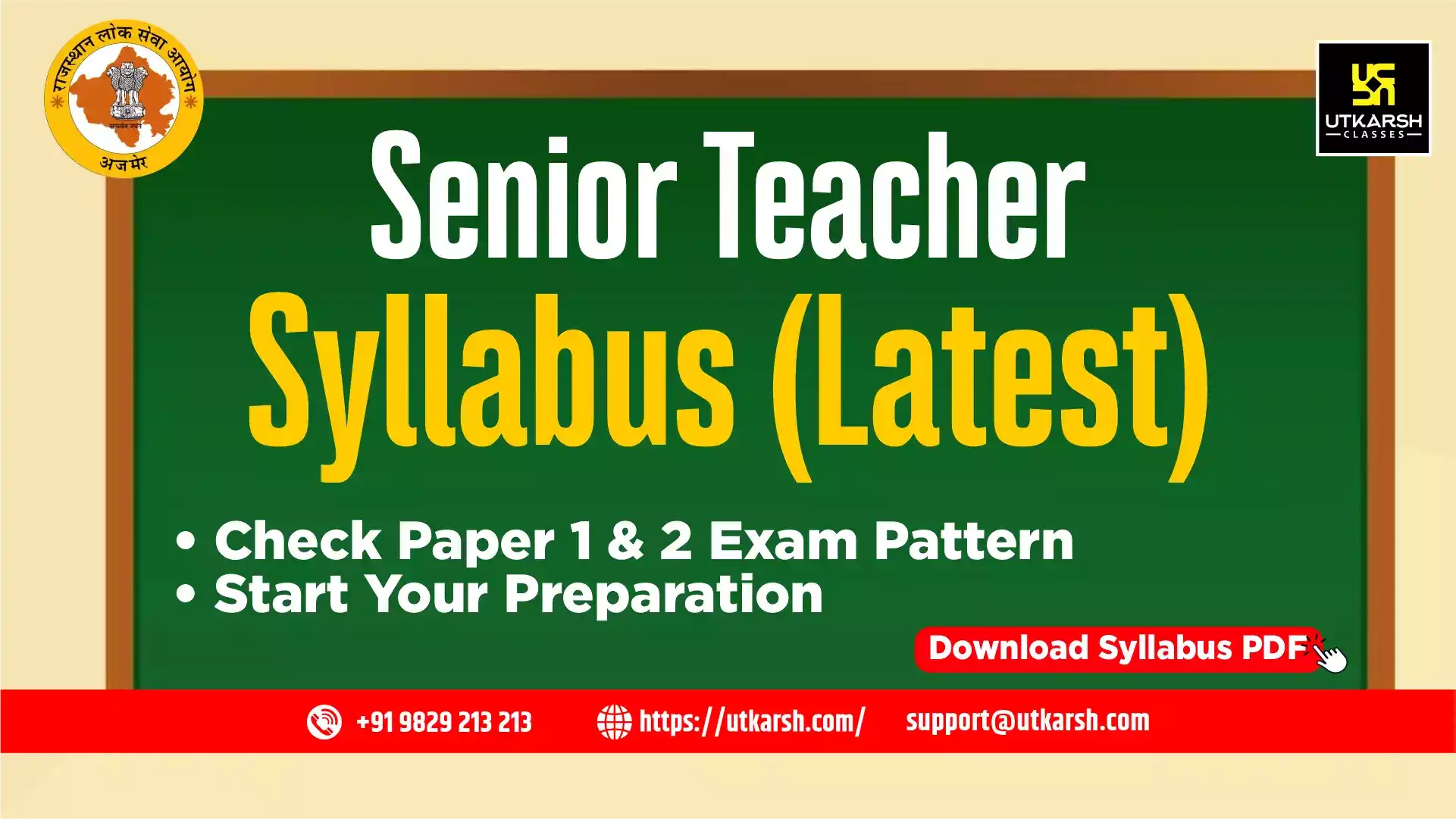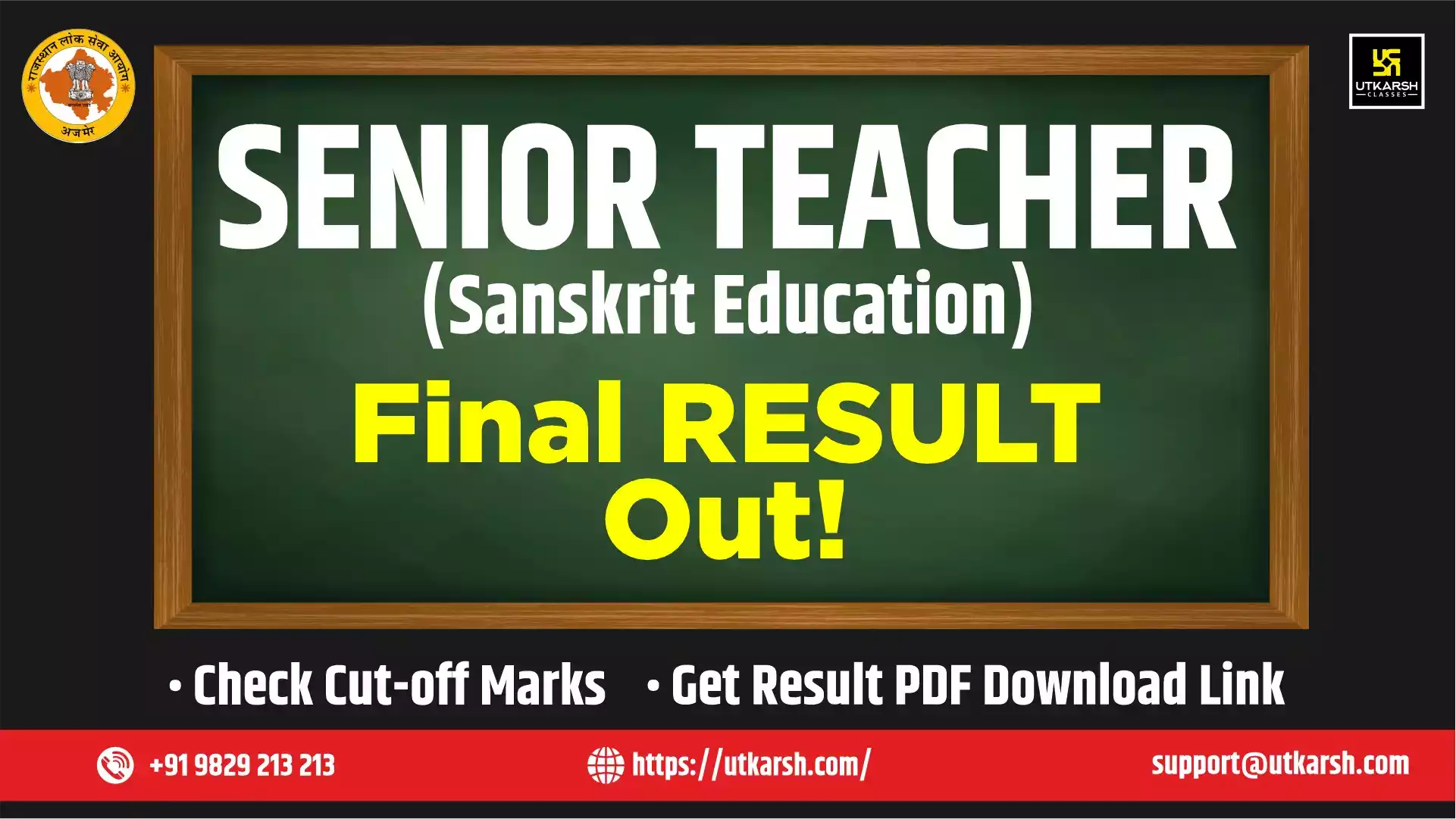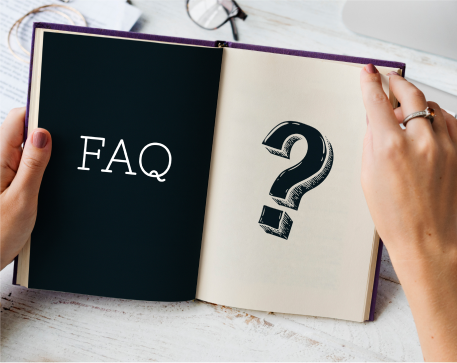Ready to learn?
Take the first step toward achieving your educational goals. Whether you’re preparing for exams or expanding your knowledge, getting started is just a click away. Join us today and unlock your full potential
832, utkarsh bhawan, near mandap restaurant, 9th chopasani road, jodhpur rajasthan - 342003
support@utkarsh.com
+91-9116691119
Support
Learning Resources
Rajasthan Govt Exams
Central Govt Exams
Civil Services Exams
Nursing Exams
School Tuitions
Other State Govt Exams
Agriculture Exams
College Entrance Exams
Miscellaneous Exams

© 2025 Utkarsh Classes & Edutech Pvt. Ltd. All Rights Reserved

RPSC 2nd Grade Teacher Syllabus has been released by the Rajasthan Public Service Commission (RPSC) for Paper 1 and all subjects of Paper 2. To ensure effective exam preparation, knowing the RPSC Senior Teacher Syllabus and Exam Pattern is very important for every candidate. By reviewing the Rajasthan 2nd Grade Teacher Syllabus, candidates can clearly understand the exam pattern, identify the important topics, and prioritize their study plan to optimize their preparation. In this blog, we have provided a detailed overview of the RPSC Senior Teacher Syllabus and Exam Pattern 2025, including a free Senior Teacher (Grade 2) Syllabus PDF and subject-wise topics, to guide you in your preparation journey with clarity and precision.
The Rajasthan Public Service Commission (RPSC) conducts the Senior Teacher (Grade II) Examination to recruit eligible candidates for teaching posts across various subjects in government schools of Rajasthan. This exam is conducted in two papers., Paper I covers General Knowledge of Rajasthan, Current Affairs, and Education Psychology, while Paper II is subject-specific, focusing on the chosen teaching subject, such as Hindi, English, Mathematics, Science, Sanskrit, Social Science, Urdu, or Punjabi. Both papers test candidates’ understanding of concepts, analytical ability, and subject knowledge in depth.
It is important for candidates to thoroughly go through the syllabus and exam pattern of both Paper I and Paper II to plan a structured preparation strategy. A clear understanding of the exam pattern & syllabus helps candidates allocate time to each subject, revise effectively, and attempt mock tests confidently.
Before starting with the revision strategy, it’s important to know the exam pattern. Knowing the marks distribution in both papers and for each subject helps you prioritize topics during revision. The RPSC 2nd Grade Teacher Exam is divided into two papers, which are Paper I (General Knowledge) and Paper II (Subject-specific Paper).
This paper is common for all candidates, and the paper is divided into four sections: Geographical, Historical, Cultural & General Knowledge of Rajasthan, Rajasthan’s Current Affairs, Educational Psychology, and General Knowledge of World & India. The number of questions for each section and their mark distribution are explained in the table below:
|
Subject |
Questions |
Marks |
Duration |
|
Geographical, Historical, Cultural & General Knowledge of Rajasthan |
40 |
80 |
2 hrs |
|
Current Affairs of Rajasthan |
10 |
20 |
|
|
General Knowledge of World & India |
30 |
60 |
|
|
Educational Psychology |
20 |
40 |
|
|
Total |
100 |
200 |
The Rajasthan Public Service Commission (RPSC) has released the syllabus for the Senior Teacher Paper I. This syllabus explains all the subjects and their topics that candidates need to focus on to prepare effectively for the upcoming exam. The syllabus for this paper includes the following topics:
|
Subject |
Topic |
|
Geographical, Historical, Cultural and General Knowledge of Rajasthan |
Geography:
Ancient Culture & Civilization of Rajasthan
|
|
History of Rajasthan upto 18th Century
|
|
|
History of Freedom Struggle in Rajasthan
|
|
|
Society and Religion
|
|
|
Political and Administrative System of Rajasthan
|
|
|
Current Affairs of Rajasthan |
|
|
General Knowledge of World & India |
World Geography
Indian Geography
|
|
Indian Economy
Constitution of India and Foreign Policy
|
|
|
Educational Psychology |
Educational Psychology
Learning
Personality
Intelligence and Creativity
Motivation
Individual Differences
|
The official RPSC Senior Teacher Paper 1 Syllabus PDF provides complete details of General Knowledge of Rajasthan, Current Affairs, Education, and Psychology subjects. It helps candidates understand the detailed structure of the exam, subject-wise weightage, and important topics to focus on during preparation. The RPSC Senior Teacher Paper 1 Syllabus PDF is available here for free download:
👉 Download RPSC Senior Teacher (Grade 2) Paper 1 Syllabus PDF
RPSC Senior Teacher Paper II is a subject-specific paper that evaluates candidates’ in-depth knowledge in their chosen teaching subject. The paper is structured according to the respective subject syllabus, covering all core topics and concepts necessary for effective teaching. The number of questions and their mark distribution for each subject section are explained in the table below:
|
Subject |
Questions |
Marks |
Duration |
|
Knowledge of Secondary and Senior Secondary standards about relevant subject matter |
90 |
180 |
2 hrs 30 min |
|
Knowledge of Graduation Standard about relevant subject matter |
40 |
80 |
|
|
Teaching methods of relevant subjects |
20 |
40 |
|
|
Total |
150 |
300 |
The Rajasthan Public Service Commission (RPSC) has recently released the syllabus for each subject separately in a PDF format for the Senior Teacher Paper II. Candidates can download the RPSC 2nd Grade Teacher Syllabus of Paper 2 for their respective subjects from the table below:
To prepare for the RPSC Senior Teacher Exam, you must plan a smart strategy to cover the complete syllabus of both Paper I and Paper II. A well-planned study schedule, regular practice, and timely revision can make your preparation more effective and organized.
Preparation Strategy for Paper I & Paper II:
Check RPSC 2nd Grade Senior Teacher: Subject-Wise Tips here
Utkarsh Classes provides paid and free study resources for the Rajasthan Senior Teacher Grade 2 Exam on its website and App, including affordable Online Courses, PYQs, Free Daily Current Affairs PDFs, and daily quizzes based on the latest exam pattern.
You can access these resources through both our website and mobile app:
RPSC Senior Teacher Grade 2 Important Updates

RPSC 2nd Grade Teacher Batch 2024: Enroll For Paper 1 & Paper 2
Read More
Related Exams
Articles

RPSC Senior Teacher Result 2024 Declared: Download Result PDF
Read More
Frequently asked questions
